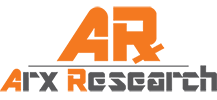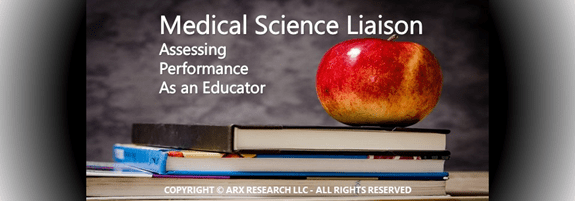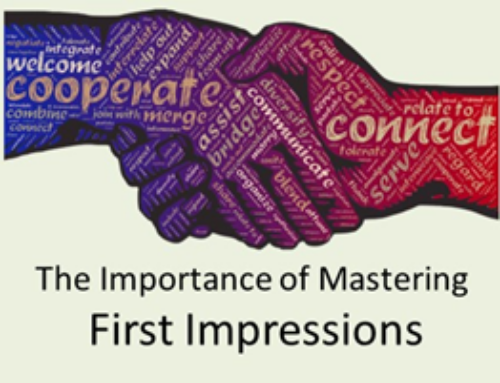The Medical Science Liaison performance assessment remains very difficult when using traditional hard metrics. There seems to be a movement to refine this process, as revealed in this study, but there is still much work to do. Everything points to the using the “quality of relationships” between an MSL and his/her thought leaders to assess performance but identifying the metrics that define or support a “quality” relationship is still a challenge.
Based on the core purpose of the role—education and dissemination of information—we attempted to find existing roles similar to MSLs and believe the educator role such as a teacher or a professor would be a fair comparison.
Measuring a teacher’s success can be a complex task, as is the MSL’s. It involves multiple factors and may vary depending on the context. Some common methods used to measure a teacher’s success include:
- Student achievement: This can be measured through standardized test scores, grades, or other measures of student learning.
- Observations: This can include formal evaluations by administrators and informal observations by colleagues.
- Student feedback: This can be gathered through surveys or other methods to get students’ perspectives on their teacher’s performance.
- Parent feedback: Parent feedback can be gathered through surveys or meetings to get their perspective on the teacher’s performance.
- Professional development: This can be measured by participation in professional development opportunities and progress made on goals set as a result of professional development.
- Classroom management: This can be measured by the teacher’s ability to maintain a safe, organized, and productive classroom environment.
Applying these concepts to the MSL role would derive the following performance evaluation metrics:
- KOL achievements: This can be measured through the number of publications produced by the KOL, speaking and advisory board activities, or involvement in clinical trials—those somewhat measure how well the scientific content was taught by the MSLs and understood by the KOL—providing a measure of learning.
- Observations / ride-alongs: Observations are usually done during the initial onboarding of an MSL and very sporadically once the MSL is deemed prepared to be on his own. Observations, or ride-alongs, should be conducted on a formal basis by managers and colleagues, several times per year, regardless of the level of experience of the MSL. These observations should include immediate constructive feedback and discussions on action items, provided by managers if anything needs to be corrected, and feedback from colleagues should be presented to managers.
- Thought Leader feedback: Unsolicited and solicited feedback to get direct input from the KOLs into how the Medical Affairs group impacted their work and provide their perspective on their assigned MSL’s performance. Feedback can be gathered through a formal survey process or by managers through meetings with KOLs.
- Professional development: Professional development can be measured through participation in professional development opportunities provided by the organization (special projects, additional training), and personal initiatives relevant to enhancing the role (skill building, business classes).
- KOL roster management: MSLs maintain an average 34 KOL relationships and need to interact with each in a way to keep their interest and engagement with the organization. This is where most “hard” metrics can be used to assess the MSLs’ performance. Measuring MSLs’ ability to hold on to their assigned KOLs by looking at how many KOLs were maintained throughout the year, the age of the relationships, and documenting reasons for erosion could be very telling about the quality of MSLs’ engagements. Keeping track of the number and duration of visits, for instance, can also show how productive the MSL may have been in a predetermined period.
An evaluation process must be fair and reliable. It is especially challenging for the MSL role because many of the responsibilities and tasks are subjective and difficult to quantify. Therefore, the organization should have the following in place:
- A definition of specific goals and objectives: Set clear, measurable goals and objectives for the role to provide a framework for the evaluation process.
- Identified key performance indicators (KPIs): Establish the KPIs that will help to quantify the MSL performance around the quality of the KOL relationships. For example, let the MSL know that their KOLs will be surveyed at some point to assess their satisfaction, or that the number of interactions by KOL matters at a specific juncture in time because the goal is to have each MSL maintain a roster of a predefined number of KOLs by the end of the year for instance.
- A formal process to gather feedback from stakeholders: Stakeholders include Thought Leaders and HCPs with whom the MSL has interacted (done online through formal KOL Feedback Surveys), team members, and colleagues outside of the Medical Affairs function where the MSL may have been involved. These stakeholders can provide valuable insights into the MSL’s performance.
- Pre-scheduled regular check-ins and ride-alongs: Schedule regular check-ins with the MSL to discuss their progress, identify areas for improvement, and provide constructive feedback. With the increased use of virtual meetings, managers can more easily “remote-in” a conversation between an MSL and a KOL than planning a cumbersome travel expedition as it used to be the norm in pre-pandemic times.
- Systematically documenting performance: Keep a record of the employee’s performance throughout the year, including notes from meetings, feedback from stakeholders, and any relevant data or metrics.
- Provide growth opportunities: Encourage the MSL to identify areas for growth and development and provide opportunities for training and skill-building.
Ultimately, the goal of a Medical Science Liaison performance evaluation is two-prong, 1) provide valuable feedback that supports the MSL’s professional growth and, 2) help the organization achieve its objectives.






